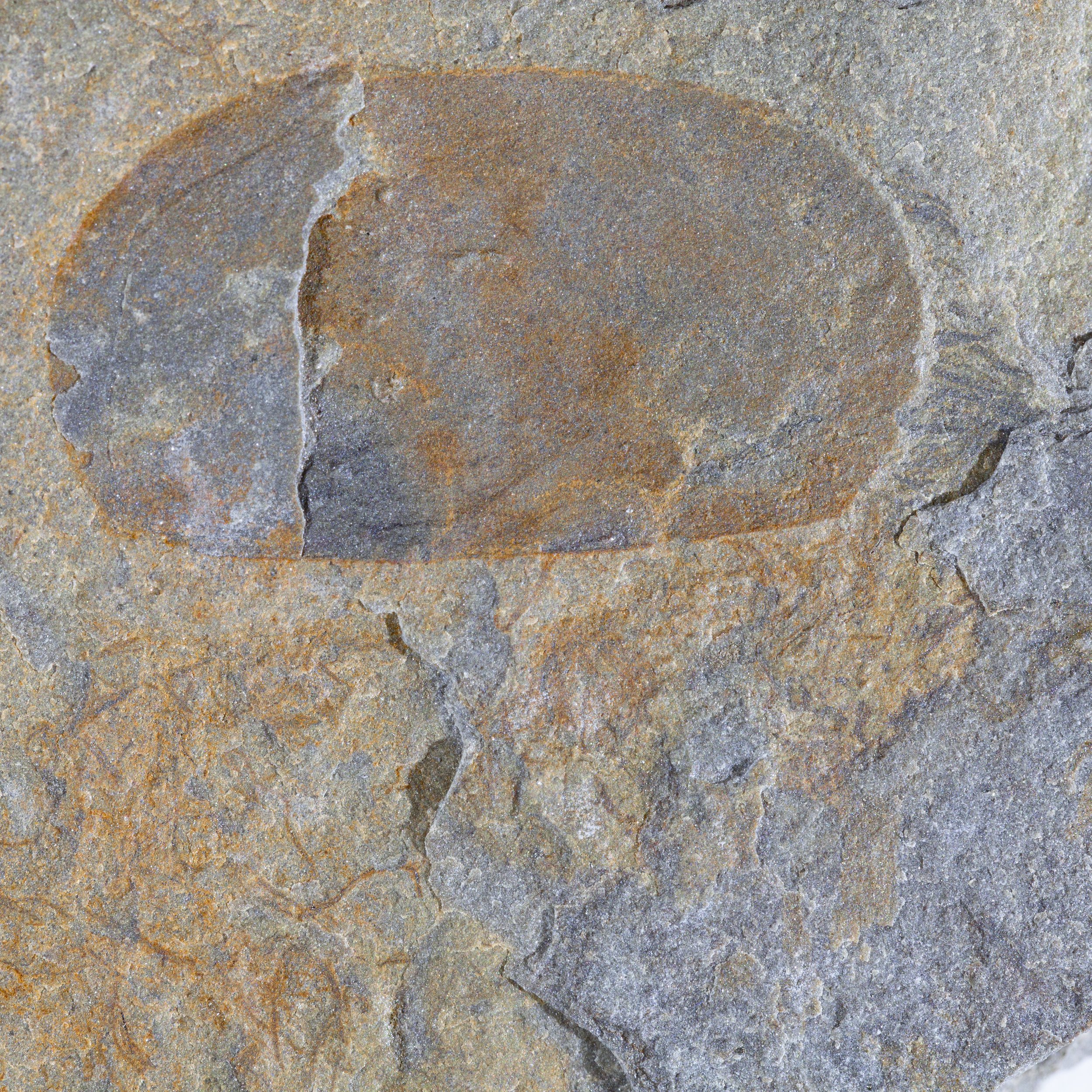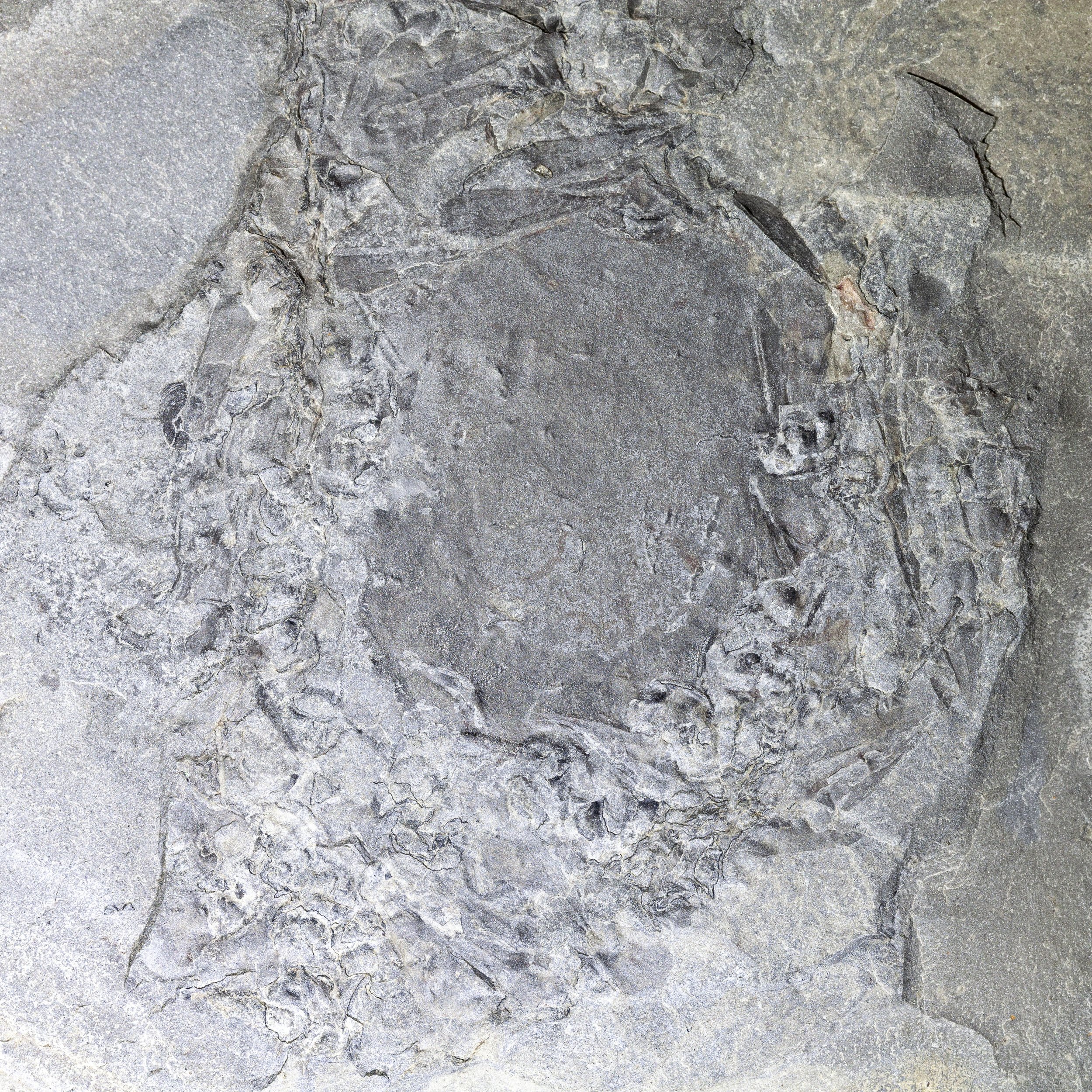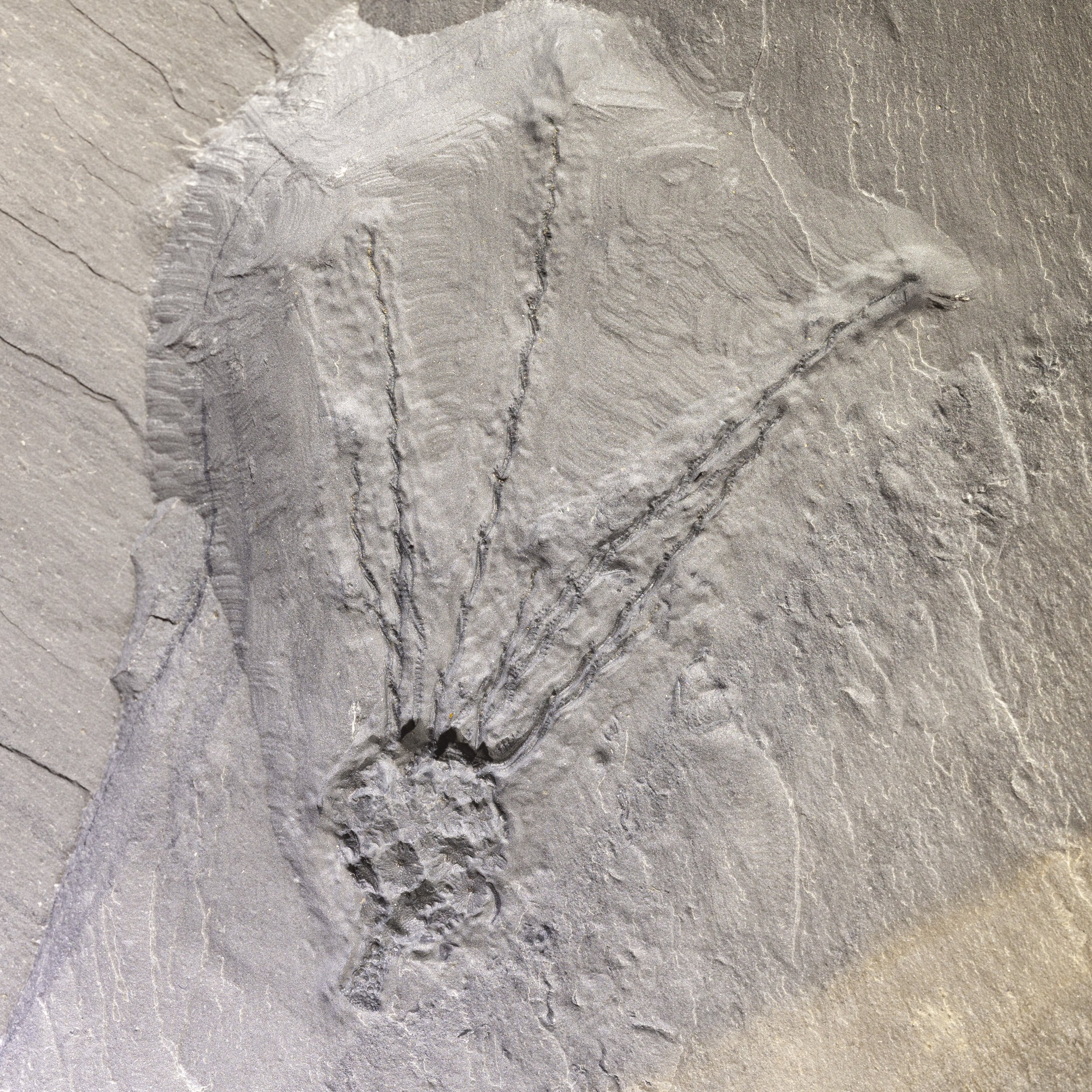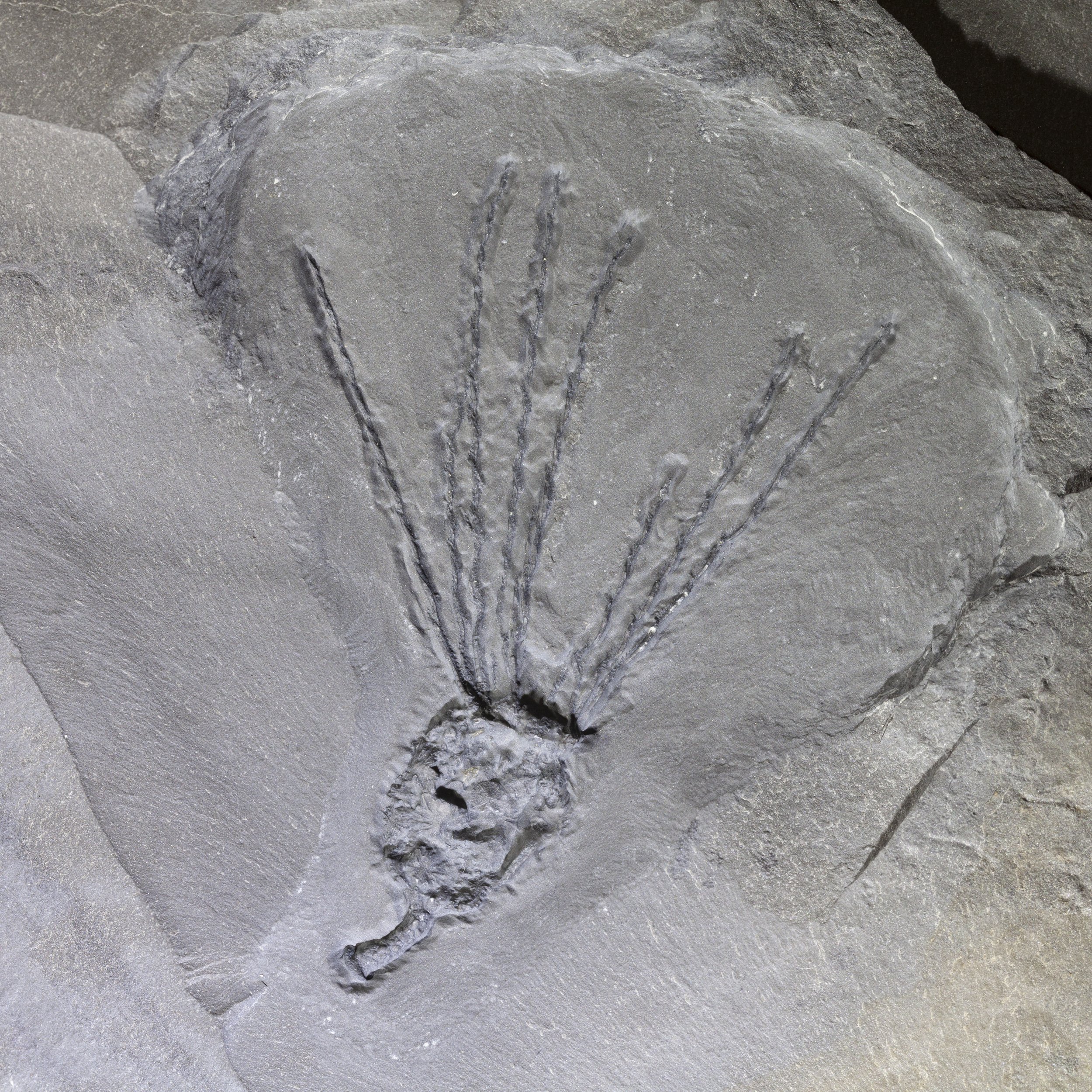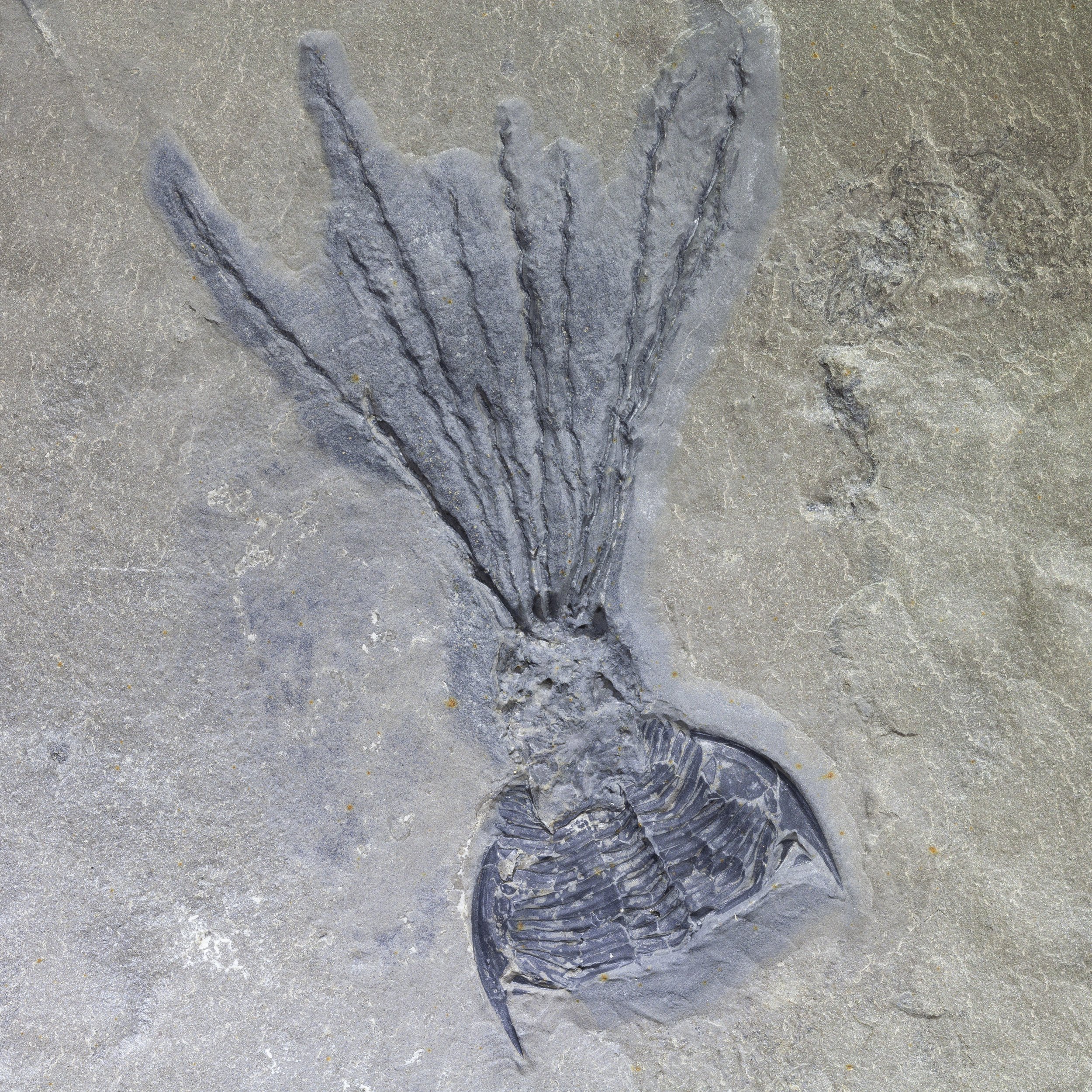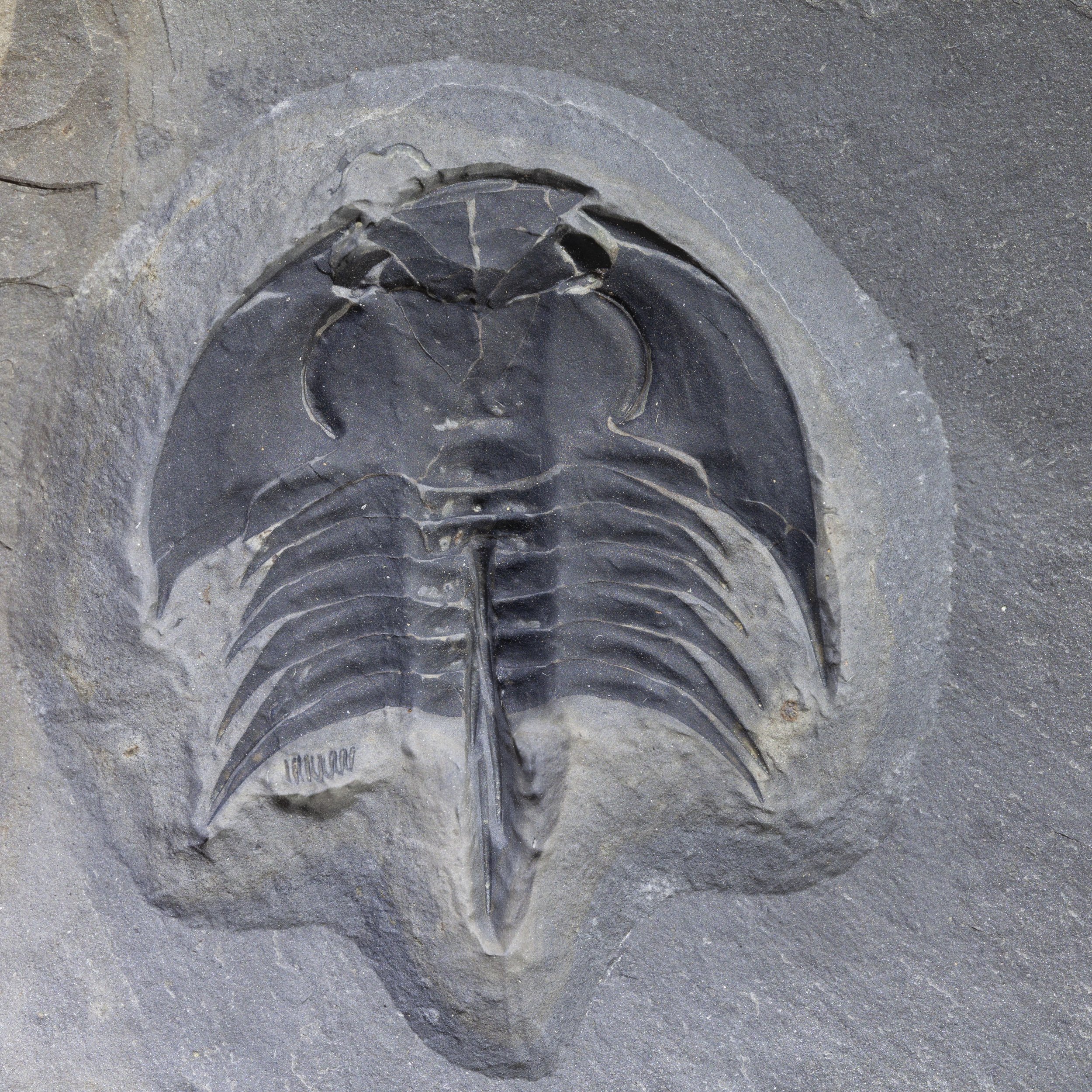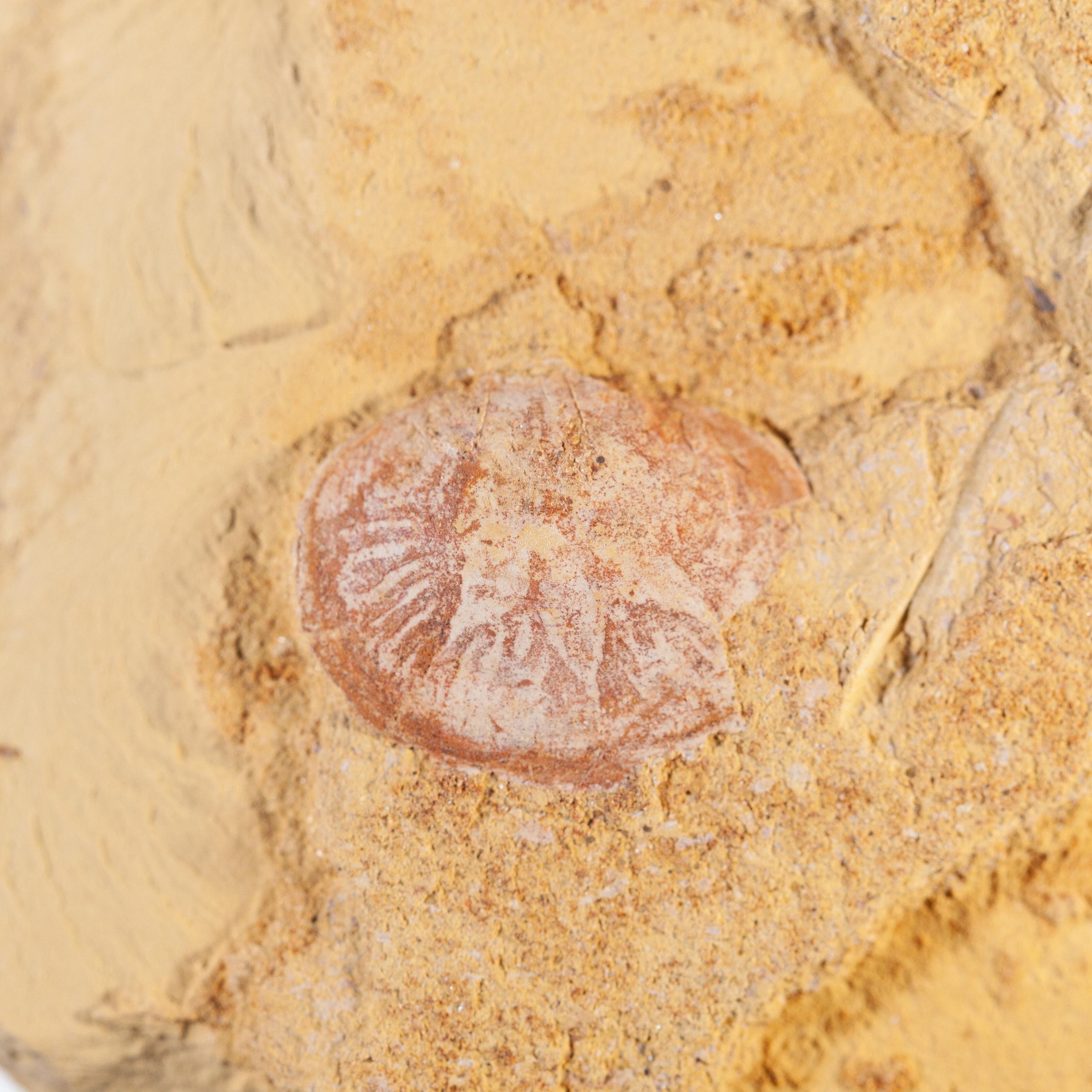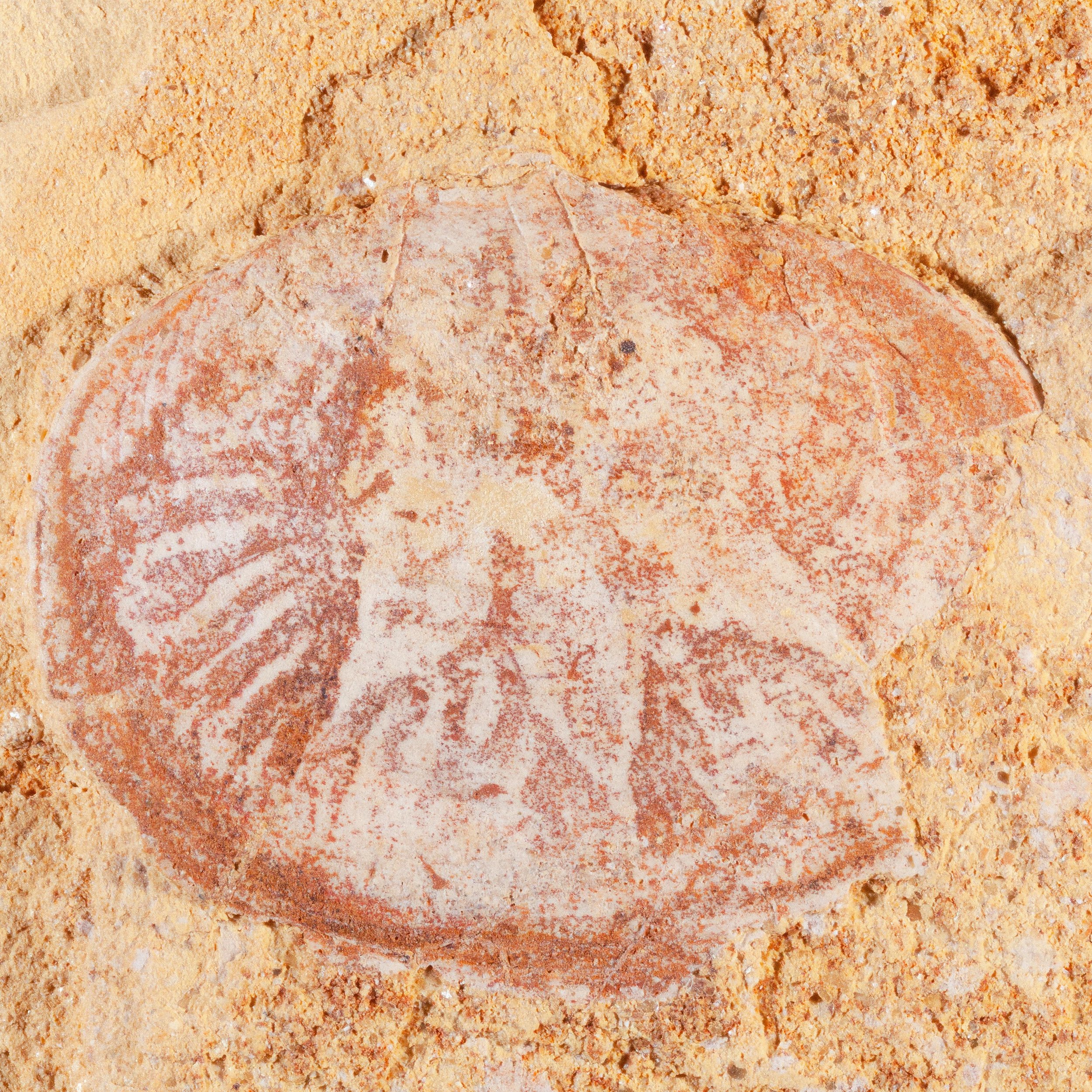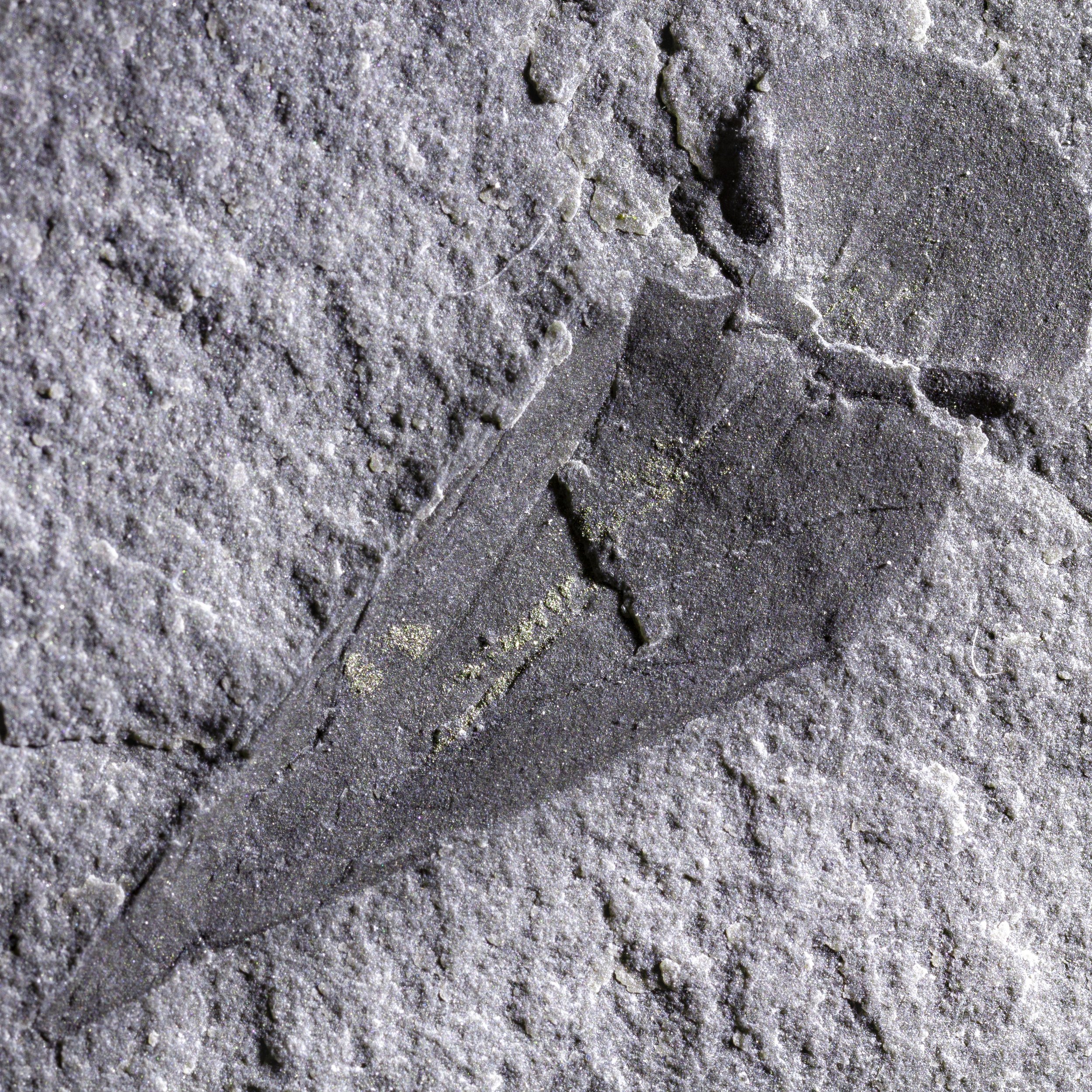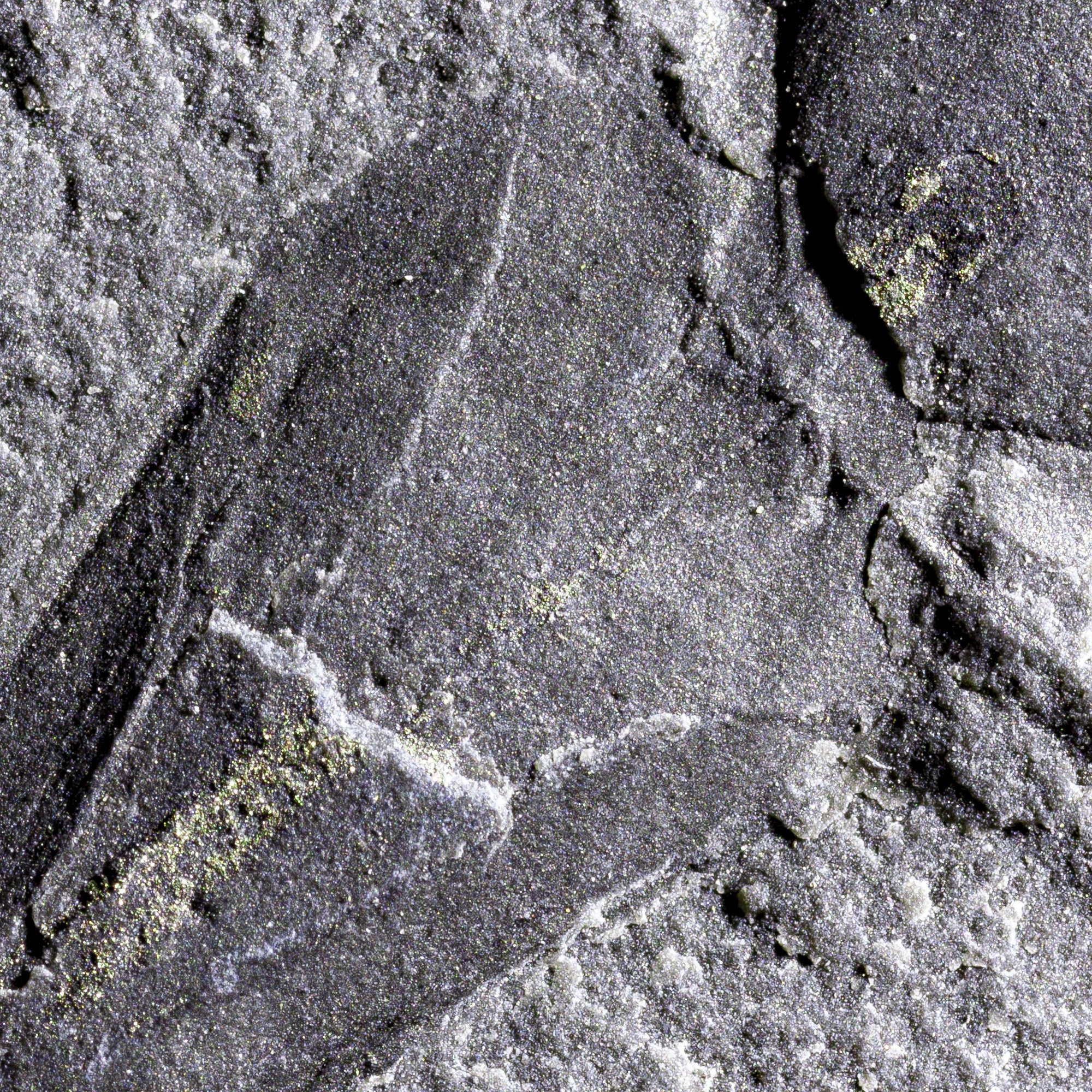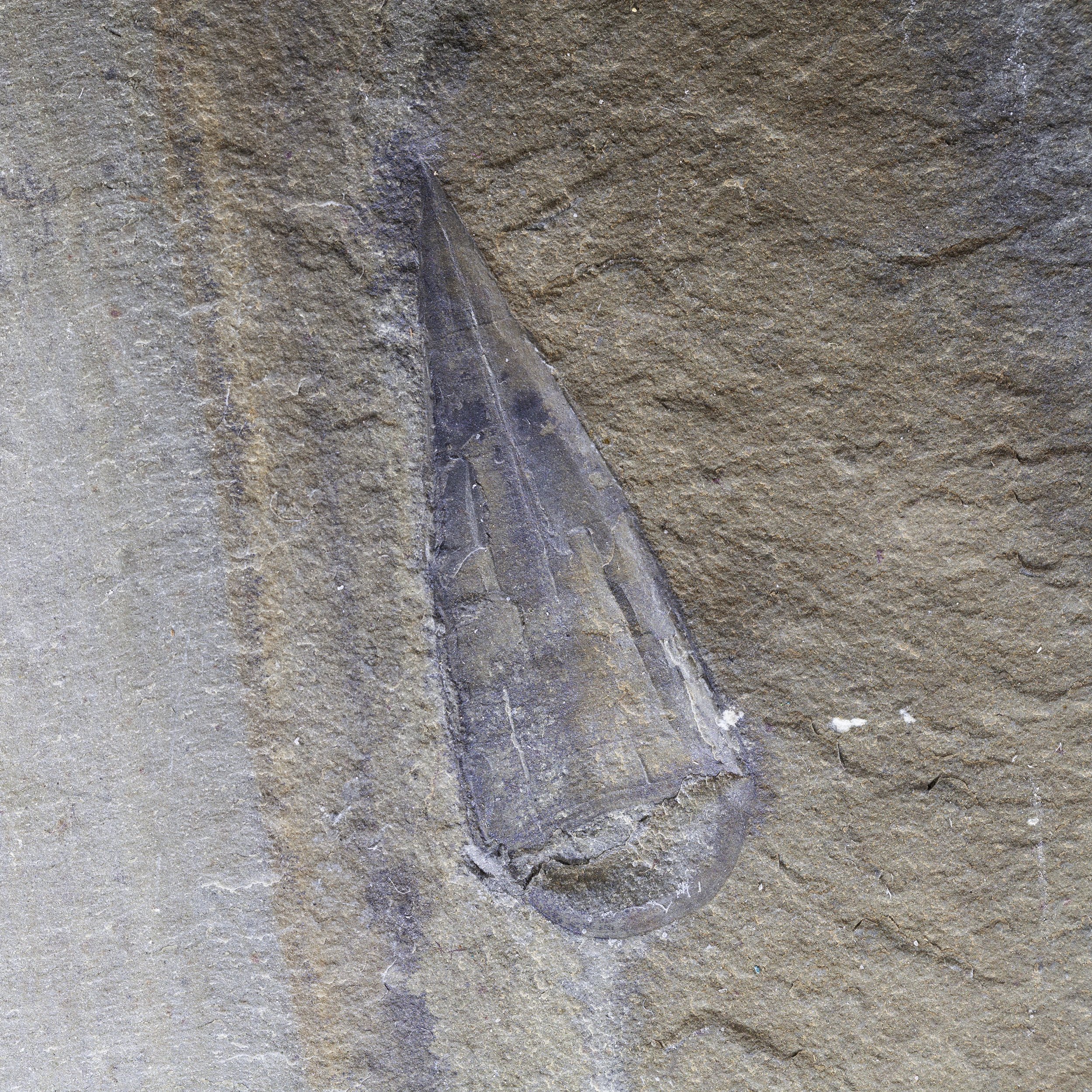 Image 1 of 2
Image 1 of 2

 Image 2 of 2
Image 2 of 2



Haplophrentis reesei / Bythicheilus typicum
Vendor: FS-JS
SKU Number: SQ4811601
Haplophrentis reesei from the Middle Cambrian, Spence Shale, Wellsvilles Mtns, Box Elder Co., Utah.
A beautiful and large Haplophrentis reesei. Recent studies have suggested affinities to hyoliths, a group of extinct cone-shaped animals with a distinctive operculum covering the opening.
This specimen is in association with a Bythicheilus typicum trilobite - this specimen is ventrally repserved.
Full dimensions are listed below.
Vendor: FS-JS
SKU Number: SQ4811601
Haplophrentis reesei from the Middle Cambrian, Spence Shale, Wellsvilles Mtns, Box Elder Co., Utah.
A beautiful and large Haplophrentis reesei. Recent studies have suggested affinities to hyoliths, a group of extinct cone-shaped animals with a distinctive operculum covering the opening.
This specimen is in association with a Bythicheilus typicum trilobite - this specimen is ventrally repserved.
Full dimensions are listed below.
Vendor: FS-JS
SKU Number: SQ4811601
Haplophrentis reesei from the Middle Cambrian, Spence Shale, Wellsvilles Mtns, Box Elder Co., Utah.
A beautiful and large Haplophrentis reesei. Recent studies have suggested affinities to hyoliths, a group of extinct cone-shaped animals with a distinctive operculum covering the opening.
This specimen is in association with a Bythicheilus typicum trilobite - this specimen is ventrally repserved.
Full dimensions are listed below.
Additional Information
Haplophrentis reesei is an extinct, enigmatic, tubular fossil known from the Cambrian period, particularly from the Burgess Shale and similar Konservat-Lagerstätten. Its long, slender, and slightly tapering cone-shaped shell, composed of stacked, calcareous plates, has puzzled paleontologists for decades. While its exact phylogenetic placement remains debated, recent studies have suggested affinities with the hyoliths, a group of extinct, cone-shaped animals with a distinctive operculum. Haplophrentis likely lived a benthic, possibly sessile, lifestyle, filtering food particles from the water column. Its unique morphology and the challenges it poses to classification make it a fascinating subject of study for understanding the diversity and evolution of early metazoan life.
References:
Reference to Wikipedia: Haplophrentis





